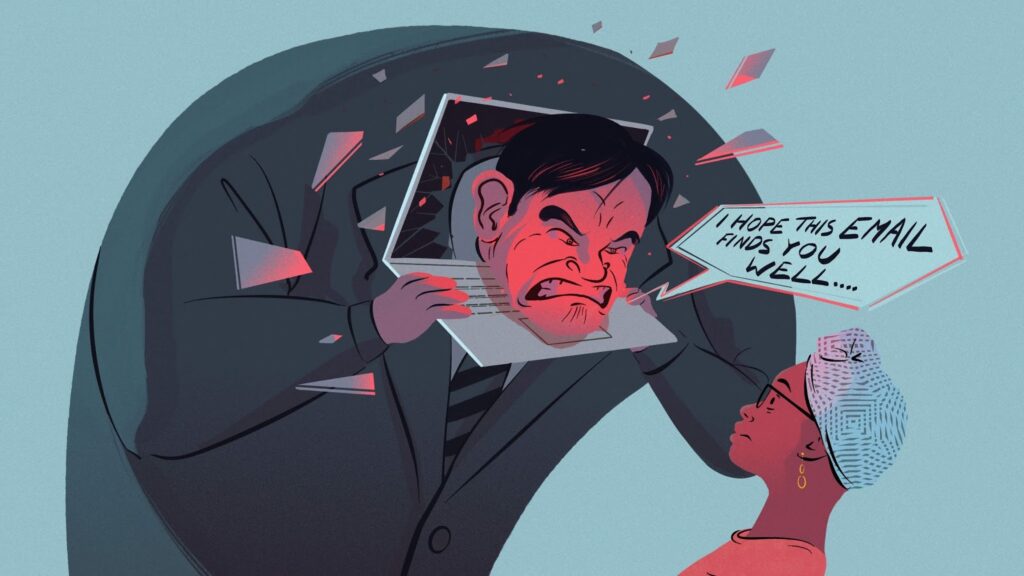Imagine being able to sell a gif, a virtual cat or even a Tweet which had its originality digitally guaranteed.
NFTs – or non-fungible tokens – are the latest hot property in the cryptocurrency market, and they’re changing the way some freelance artists make money from their creations.
An NFT can be anything digital, from a song to an image, but they’re made – or ‘minted’ – in such a way that their authenticity is guaranteed. This allows an artist to sell an original of their digital creation to buyers forpotentially huge sums.
Crypto for artists
The rise of cryptocurrencies such as Bitcoin in recent years has led to anexplosion of virtual methods of exchanging funds for services.
Bitcoin is a digital token, virtual money, and its ownership is recorded on a Blockchain – a kind of ultra-secure database which can’t in theory be altered by a third party.
Each Bitcoin is interchangeable – they are ‘fungible’ – much as one pound coin looks the same as another, so does one Bitcoin hold the same value asanother Bitcoin.
What’s different about an NFT is that each one is by definition unique, or at the very least, in limited supply. They are not interchangeable with each other like Bitcoins. They are ‘non fungible’.
This allows the artist to create NFTs of images, music, or virtually anything that’s digital and give it an inherent value by selling it as the original or limited edition version.
Imagine, for instance, if the Beatles created an NFT of the first recording of Rubber Soul. Just as once the physical record itself would have had value that would be prized by a collector, so too could they sell a digital version tha twould be just as valuable (in theory).
“A simple way of thinking about NFT is in terms of digital ownership” said Moogz –AKA Matthew O’Donnell – an ethical hacker and artist who uses them.
“If we register a domain name, we own it and we can sell it if we wish; the same rules apply to NFTs.”
Big money
Like the crypto industry itself, there are those who dispute whether the potential usefulnessand value of NFTs are being somewhat overstated. But the fact remains that people are prepared to pay huge amounts for them.
A 50-second video by Grimes sold for $390,000, while $6.6 million was spent on a video by Beeple.
Nyan Cat was also sold as one and Jack Dorsey, the founder of Twitter put an autographed tweet up for sale which went for $2.9 million.
For artists, NFTsgive them the chance to sell work that there may not be a big market for. Being able to sell a gif hasn’t always been a realistic prospect. But if you’re a digital artist, you could create a gif which may have otherwise gainedpopularity online but wouldn’t have earned you any money. By selling it asan NFT though, the buyer knows they have something unique – an original versionof that gif, or one that’s in limited production – and this gives it added value.
NFTs also have an additional bonus in that you can activate a feature which gives you apercentage every time it changes hands. This has opened up a whole new world of art selling, one which the traditionalistsin the industry are still trying to figure out.
“Right now, the wider art world is trying to figure out how the two distinct spheres of traditional and crypto art will intersect.” Moogz said.
“In terms of my work as an artist and curator, NFTs remain the option for a digital artwork to be sold.”
A growing market
Just as the rise of Bitcoin and other crypto has led to a surge in people looking to invest and hopefully reap the benefits down the line if it gains ground, so too have NFTs attracted their own interested parties.
“We are seeing a new breed of crypto-aware collectors – and artist themselves becoming the most prolific collectors – which has potential to further fracture the traditional artworld collector and the crypto-art collector.” says Moogz.
NFT trading
For freelance artists, there are several marketplaces centred around NFTs which let you buyand sell, such as OpenSea, Rarible and Nifty Gateway.
For freelancers who want to put creative work up for sale as an NFT, it is worth considering that it is not free to create one and there is an upfront cost requiring the purchase of Ethereum – a type of technology used to send cryptocurrency – to ‘mint’. ‘Minting’ is the creation of the NFT itself and that cost is called a ‘gas fee’.
The cost varies depending on the market but there are websites which can provide a guide on prices in various marketplaces.
Just a passing fad?
Ever since the days of the dot com boom and bust, scepticism has prevailed in some quarters about whether new waves of technology are being over hyped.
But despite a deluge of interest in the past year about NFTs, for many creative freelancers who use them – there’s nothing so ‘new’ about this so-called ‘newfad’.
Moogz said: “The explosion of NFT this year has seen a lot of exposure for the crypto-art community which has been active for years until now; it’s this exposure which has led to the broader interest from outside that community.”
He added: “The fad aspect would relate to whether the mainstream remain interested, however, the crypto-art community – both creators and collectors – have been vivaciously operating for several years now.
“Those original players are not going to lose interest, but we will see how themainstream continues to respond over time. Time will tell!”



